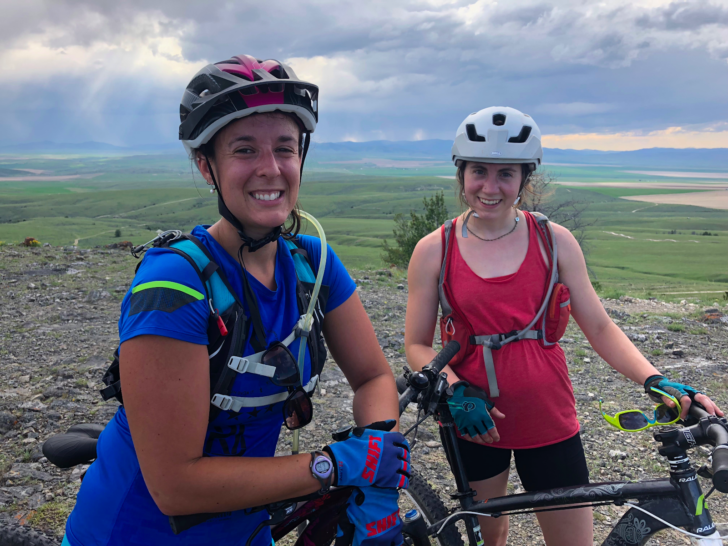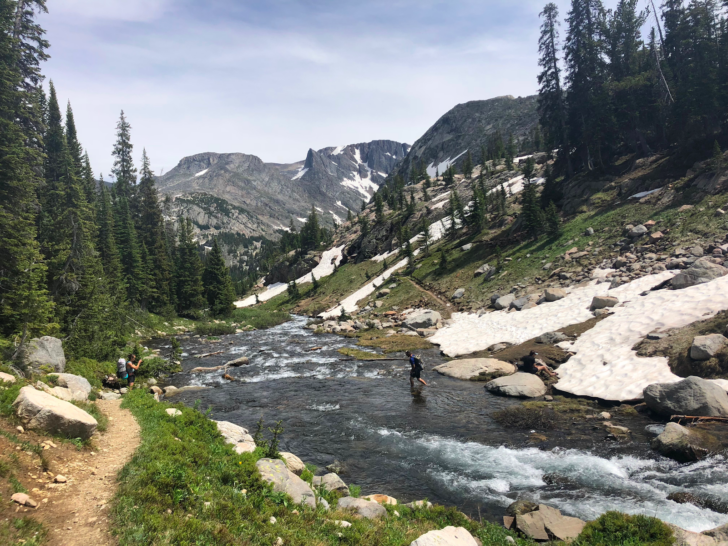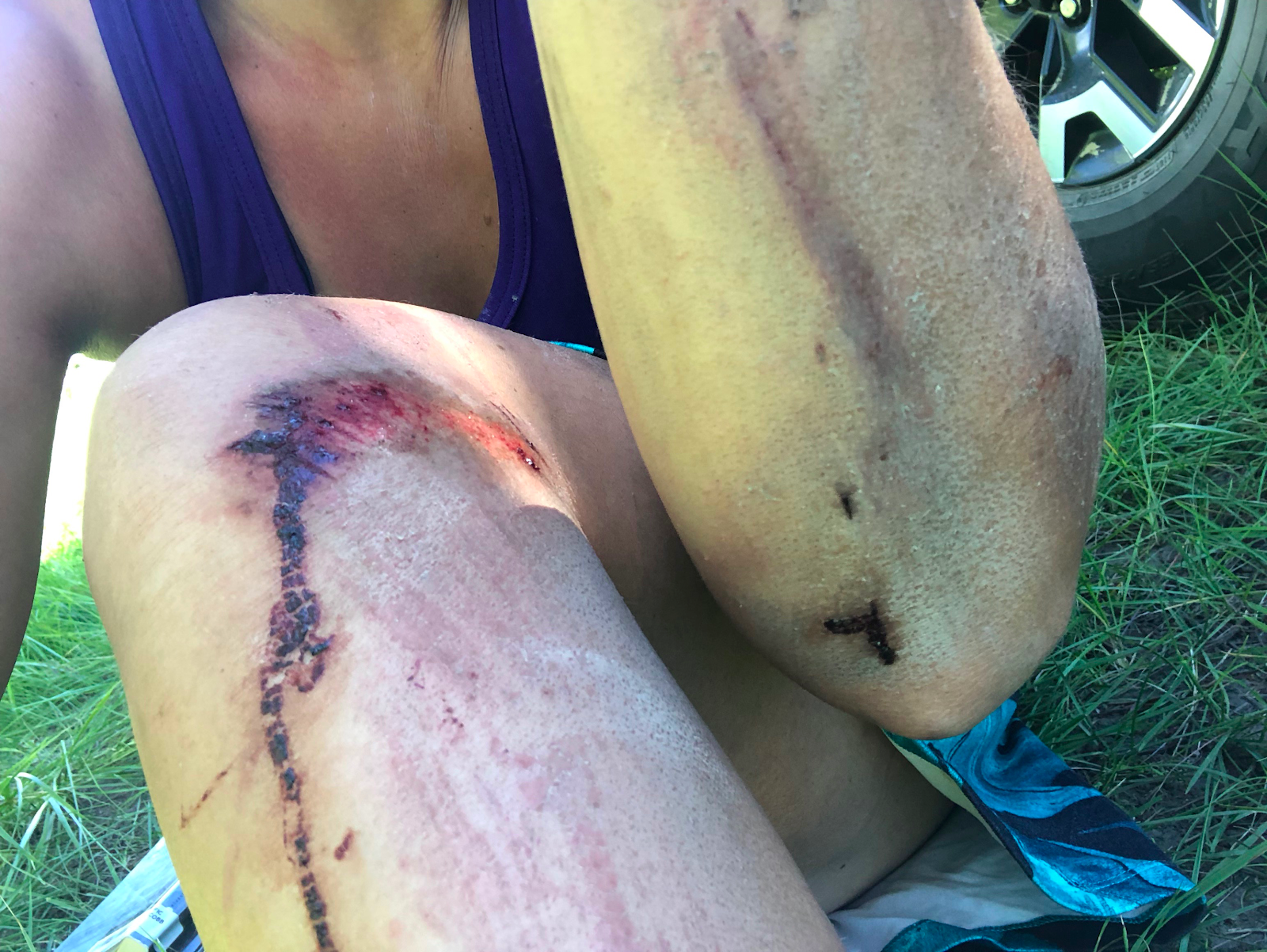I’ve written before about being an average athlete, suffering for the sake of the sport, and learning to turn around. As I saw each of these articles publish, I realized how connected they were. Because I have always felt like an average athlete, I felt like I should be suffering more. With this suffering comes the realization that at some point you have to turn around.
The fourth part of this connected web is risk assessment. Risk assessment is closely tied with learning to turn around, and for most people, is often the deciding factor in doing so.
As you likely guessed, this is easier said than done for many people, myself included. When you feel like you need to be constantly pushing yourself to prove your worth, you ignore red flags in reaching your objective.
Ideally, risk assessment should be the idea that prefaces a discussion about abandoning the endeavor. For me, these crucial steps have historically been bowled over in the desire to prove my worth.

I’d been hiking and backpacking for years and was consistently the slowest person up the hill, the clumsiest person stumbling through boulder fields, and the person dragging by the end of the day, looking for camp. By the time I started getting more into mountain sports like climbing, mountain biking, and kayaking, I was sick of being the slowest person in the group. Starting new sports was a chance to leapfrog over what I viewed as subpar athletic skills by upping my mental game.
Maybe I was the last person in the group still struggling up the mountain bike climb, but I’d be at the front of the line for the descent, knowing I was faster and willing to take more risks than the rest of the group. I took huge falls, including losing massive swaths of skin on both elbows and knees in one agonizing day of wrecks, but I was determined to push those fears out of my head in pursuit of being above average at something. Climbing was similar – I’d push myself past the point of intimidation, forcing my head into the game and faking confidence even when it wasn’t there.

Headspace is an important factor in success with extended or stressful endurance endeavors. Physical ability, while important, is not the only deciding factor in whether or not you reach your goal. Headspace is where I excelled. If I got into a stressful situation, I would imagine a dial in my head. I would picture myself turning down the dial, and I’d feel myself relax. Whatever was stressing me out didn’t go away, but my ability to push it aside enabled me to keep moving forward. While this can be a hugely beneficial mental skill to deploy in high-stress circumstances, it meant I was able to ignore elements of a situation that might have been warning signs telling me to turn around.
In the spring of 2019, I went kayaking with a friend I was trying to impress. We were going morel hunting on an island only accessible by boat, and while he warned me the rapids were faster than anything I’d boated before, and there were hazardous sections of deadfall, I brushed his warnings aside. I felt a twinge of anxiety as we unloaded the boats, but I turned my stress dial down and pushed off the riverbank.
Ten minutes from our put-in, I fumbled my boat and wound up heading down the wrong channel. Unable to maneuver my boat in faster water than I was accustomed to, I collided with a tree, flipping underwater instantly. In my panic, I forgot everything I knew about rolling and wet exits. I couldn’t even pull the skirt. I managed to roll enough to get a water-logged gulp of air, but was unable to get out of the boat or roll all the way up. By the time my partner beached his boat and swam the rapid to reach me, I was unconscious.

It took this brush with drowning to make me take a step back and reevaluate my risk assessment.
Granted, there are personality traits that go along with a lowered risk perception other than just trying to impress people. Many people who exhibit reduced risk perception also have lower trait anxiety, which means it takes a more intense situation for them to feel things strongly. In other words, someone like me might be considered a type of thrill seeker.
My risk-assessment learning curve was less of a curve and more of a flat line followed by a vertical spike. I was aware that I ignored red flags in my objectives, and had always been pretty determined to plow forward regardless of warning signs. But being trapped upside down, careening underwater through the current was the reality check I needed.
Some people have finely tuned risk-assessment radars from the time they set foot on their first backpacking outing. Then there are people who grow with their experiences and take some calculated risks while acknowledging other scenarios aren’t worth the trouble. Still, others need to be caught in a bad backcountry situation to rattle loose the stubbornness and desire to prove themselves, as well as overriding natural lowered risk perceptions.

This concept is less about being a beginner and more about understanding our own individual learning curves. I wasn’t a beginner backcountry athlete when I finally stopped to reassess my relationship with risk. By the time I understood the dangers of my lowered risk perception, changing my decision-making was a fast process. Sometimes our learning processes aren’t linear, and they don’t match up with people around us.
I am still working to understand my own connections between lowered inhibition and smart decision making, and I still don’t like to let fear get in the way of continuing up a peak, navigating a scramble, or finishing a climb. But now, I give more agency to the voice in my head that reminds me the twinge of anxiety is there for a reason, and it’s ok to stop and listen to it.
Related Content
- More by Maggie Slepian
- Have you had a close call because of poor risk assessment? Tell us about it in the comments.
DISCLOSURE (Updated April 9, 2024)
- Backpacking Light does not accept compensation or donated/discounted products in exchange for product mentions or placements in editorial coverage. Some (but not all) of the links in this review may be affiliate links. If you click on one of these links and visit one of our affiliate partners (usually a retailer site), and subsequently place an order with that retailer, we receive a commission on your entire order, which varies between 3% and 15% of the purchase price. Affiliate commissions represent less than 15% of Backpacking Light's gross revenue. More than 70% of our revenue comes from Membership Fees. So if you'd really like to support our work, don't buy gear you don't need - support our consumer advocacy work and become a Member instead. Learn more about affiliate commissions, influencer marketing, and our consumer advocacy work by reading our article Stop wasting money on gear.




Home › Forums › Learning Curve: Risk Assessment